In this, our last installment about Seed School we explore the economic and political makeup of seeds in our world. For me, this is the real reason we need to save seed and preserve species.
On our final day, we were asked to brainstorm about how to solve problems on a local level, as well as a global one. As gardeners we know that local action is sometimes the only thing that makes a difference. Community gardens, for example, have been known to transform a crime-ridden neighborhood into a thriving community. But we must take action, whether in our backyards or on the national government level. (Again, if you missed Part 1 or Part 2 of Seed School, take a gander.)
Here was our first question:
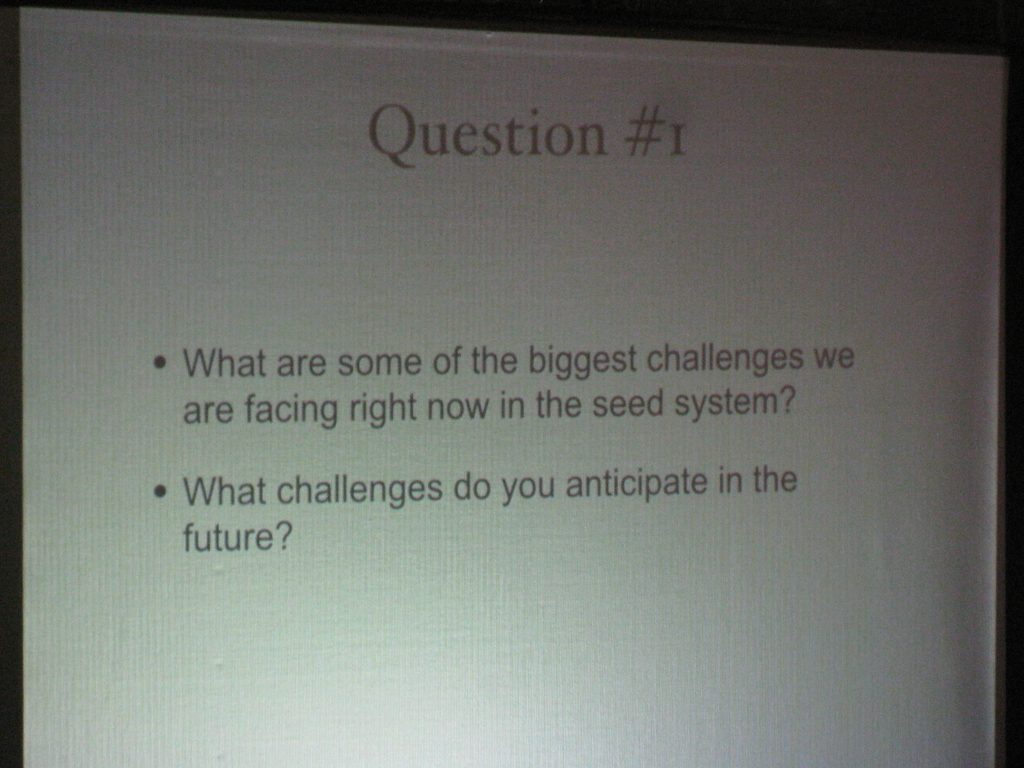
Where do we start? Our table got very excited and dove right in:
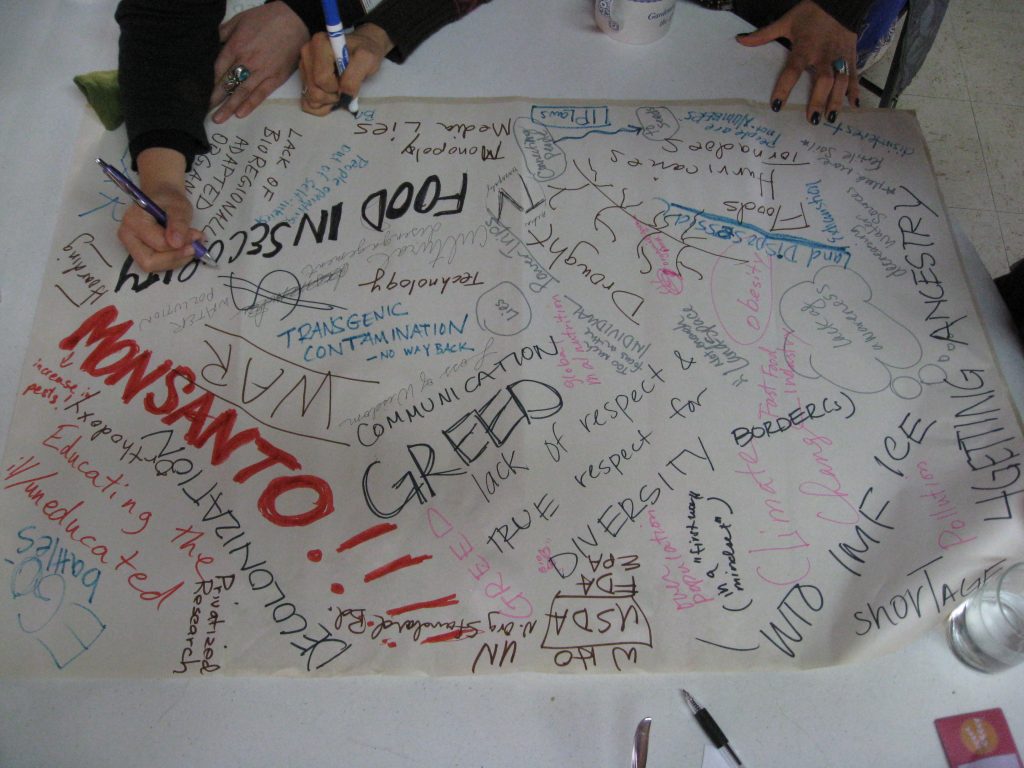
We scribbled the obvious: monopoly control over seed sources by only a few companies, lack of education or respect for seed diversity, government partnership with GE (genetically engineered) seed companies, climate change (droughts and floods), war (which has caused seed variety extinction in war-torn countries like Iraq and Afghanistan.)
Just to explain these issues a little: independent seed companies have been bought up over the years by Monsanto and other corporate seed producers. These companies have slowly been patenting hybrid seeds they now own. Over time, hybrid seeds have gained more space in seed catalogs (because they make more money), pushing out and causing the eventual extinction of some heirloom varieties. If people don’t know it’s happening, they won’t feel the need to preserve these species.
Also, as farmers determine that GE seeds cause more trouble than good-old-fashioned open pollinated (OP) seeds, they find that large quantities of organic OP seeds are not readily available.
It’s a lot to take in. How can we possibly fix these global problems with a local garden? Seem impossible? Not really.
Since the entire week was filled with inspiration, ideas were free flowing:

How about subsidized city gardens created with local seed? Positive education. Increased awareness through the Transition Movement. Make seed-saving and “local seed” sexy, or patriotic -Saved in America! (it’s all about marketing, isn’t it?) Lead with the $, because money talks. Utilize local resources instead of imports.
Our last question brought it home:
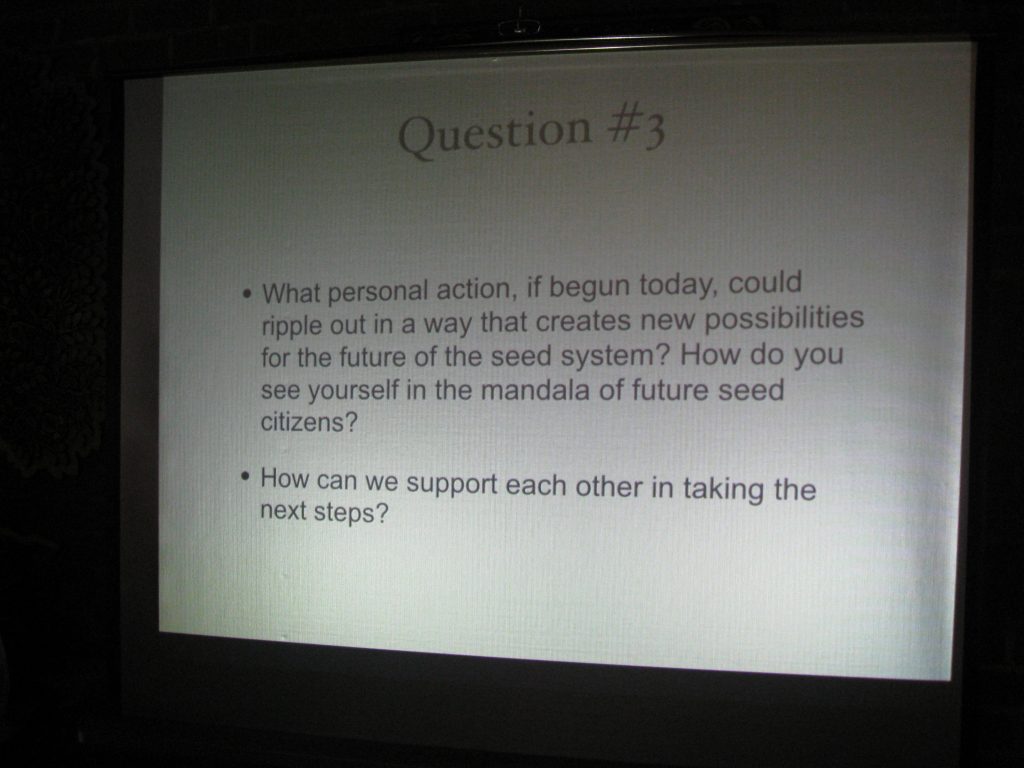
Whoa, that’s a tall order. Or is it? Let’s see:
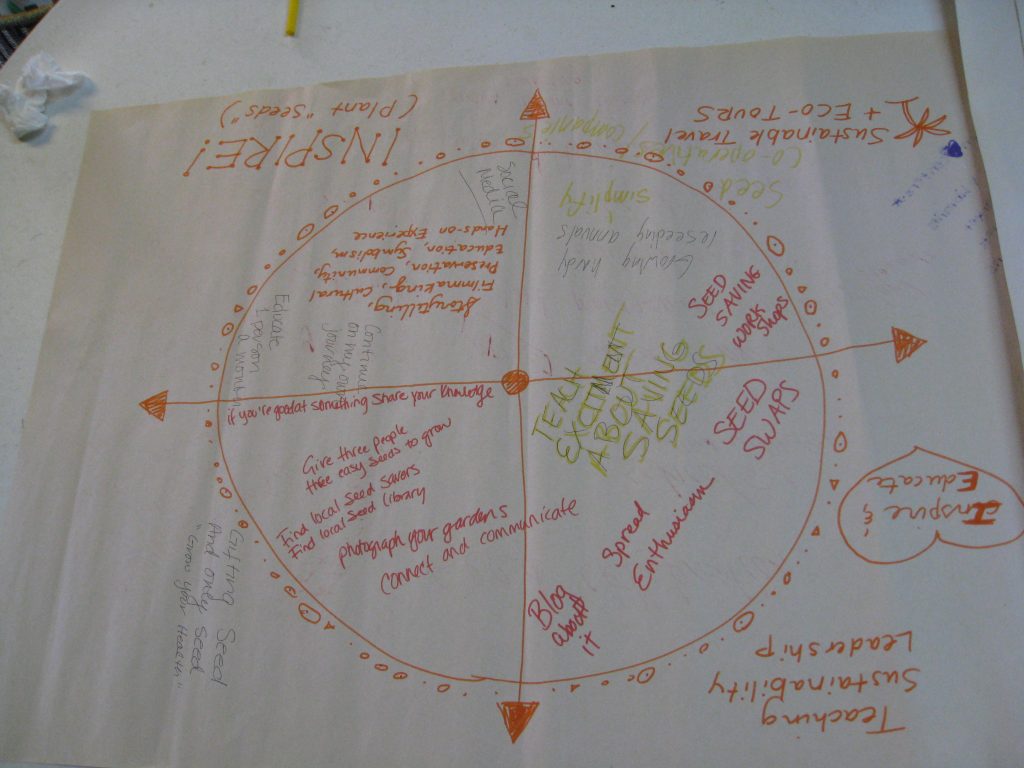
Many of us in the room were educators, so naturally the first thing we thought of was to create excitement around saving seeds (are you excited yet?). Teach one person about the joys of seed-saving and it will spread. Others in our group were documentarians, photographers and travelers, so eco-tourism and partnering seeds with sustainable travel came to mind (witness how rain forests procreate, anyone?).
Other ideas: Gifting seed and only seed, growing hardy re-seeding annuals, do a seed swap, start a seed library or seed cooperative in your neighborhood. Teaching sustainable leadership, posting photos of your garden, spreading the word about the importance of seed-saving through social media. These are all things we can do today, and this spring.
It may feel like the global issue is insurmountable, but if we take one personal step to educate another gardener and grow the local seed movement, it will spread like wildfire.
Just wait and see. But don’t wait. Be part of it instead. 🙂

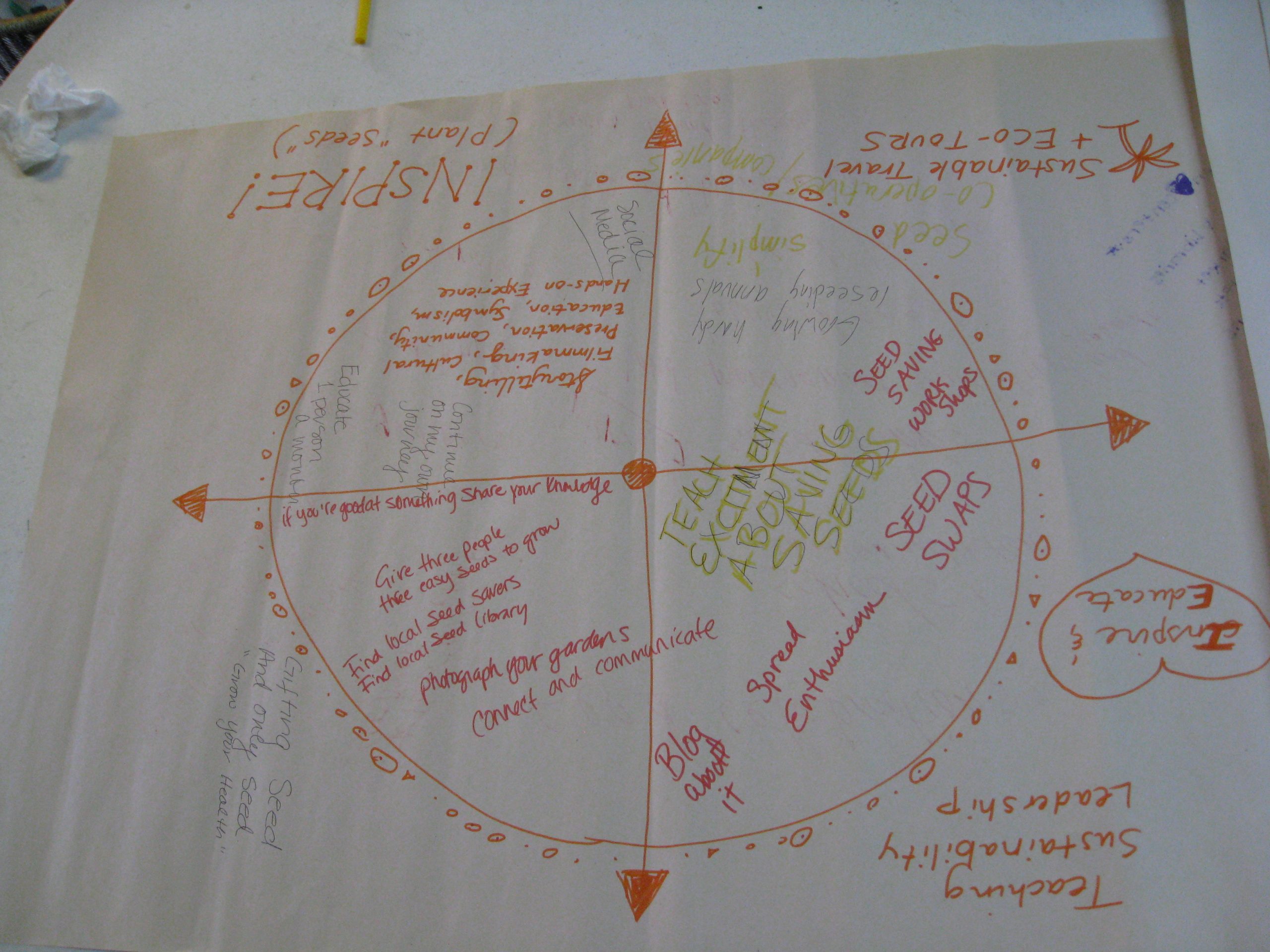
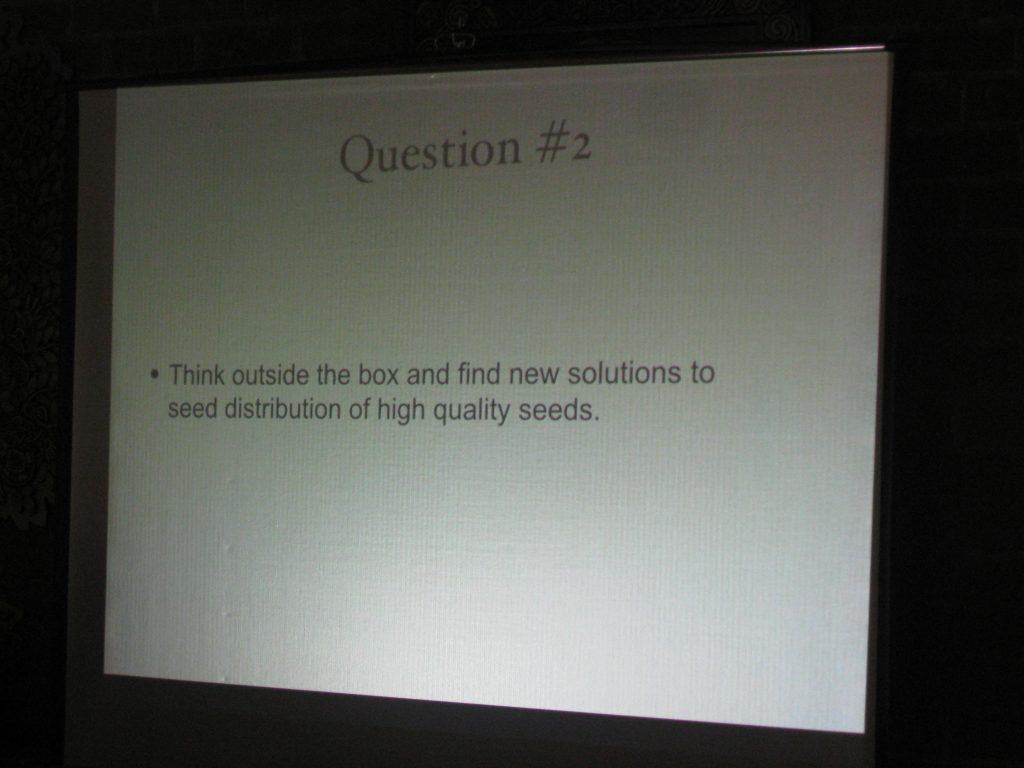



Pingback: Let's Go to Seed School - Part 2 - Gardenerd